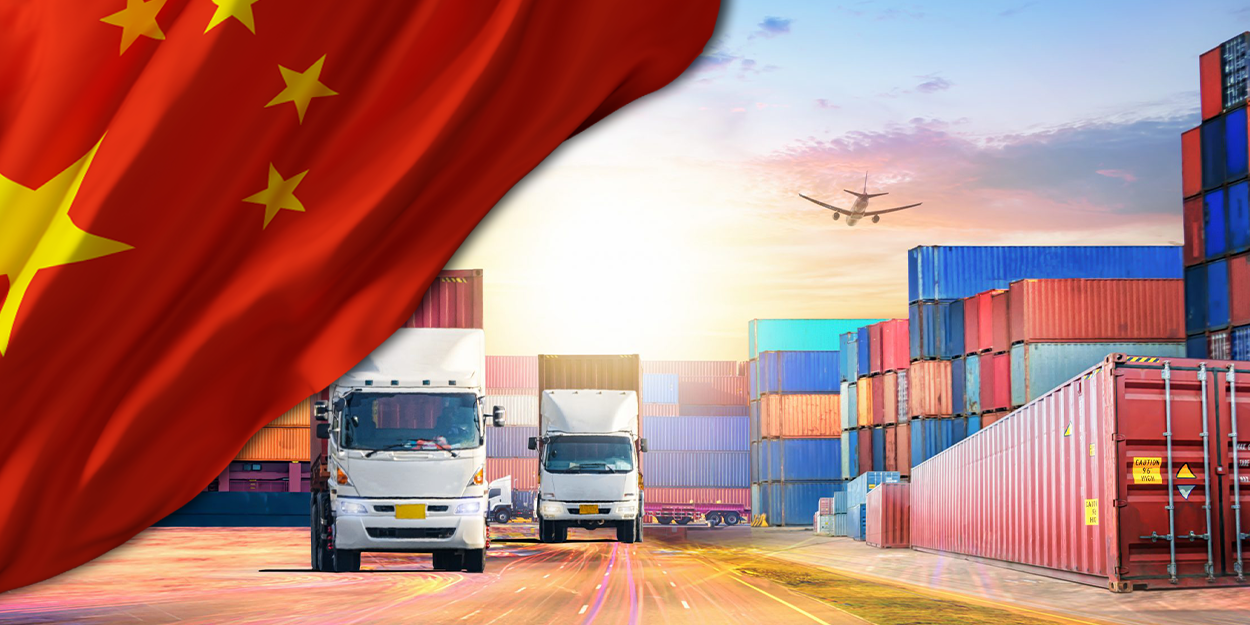A Comprehensive Guide to Importing Products from China:
How is it Done and What is the Process?
What does Europe Seller offer you in this regard?
China, which holds a significant share of global trade, has become an attractive supply hub for many entrepreneurs and businesses. Importing products from China offers cost advantages while providing a vast range of products to grow your business.
Why Should You Import Products from China?
China, as one of the world’s largest manufacturing centers, offers unparalleled opportunities for businesses across all sectors. Here’s why importing from China can be a game-changer for your business:
Low Costs:
With significantly lower production costs compared to many other countries, China enables businesses to procure products at competitive prices. This cost efficiency not only enhances your profit margins but also allows for competitive pricing in global markets.
Wide Range of Products:
From cutting-edge electronics and fashion textiles to premium cosmetics and industrial machinery, China’s diverse manufacturing capabilities ensure you’ll find a solution for virtually any business need. The country’s adaptability to custom production also supports niche market demands.
Access to Global Markets:
Importing from China opens doors to expanded business opportunities by enabling you to cater to a diverse and global customer base. Leveraging China’s advanced logistics infrastructure, you can distribute products efficiently across multiple international markets.
Innovation and Scalability:
Chinese manufacturers are renowned for their capacity to scale production quickly and adapt to innovative trends. This ensures businesses can meet increasing demand while staying ahead in competitive markets.
Established Trade Networks:
With years of global trade expertise, China boasts a robust export ecosystem. Reliable suppliers, advanced shipping networks, and streamlined customs procedures make importing smoother and more predictable.
By choosing to import from China, you not only gain access to high-quality products but also position your business to thrive in the competitive global marketplace.
How Does the Process of Importing Products from China Work?
The success of importing products from China relies on following a well-structured process. Below are the essential steps for a seamless import operation:
Market Research and Product Selection
The first step involves identifying the products you plan to import. During this stage, analyzing your target audience, assessing product demand, and studying market trends are vital. Commonly imported product categories from China include:
- Electronic devices: Gadgets, accessories, and components
- Fashion items: Clothing, shoes, and bags
- Textiles: Fabrics, curtains, and upholstery
- Accessories: Jewelry and household items
Understanding the needs of your audience ensures your product choice aligns with market demands, increasing the likelihood of success.
Finding a Supplier and Requesting Quotes
After selecting the products, the next step is identifying reliable suppliers. Platforms like Alibaba, Made-in-China, and Global Sources connect you with manufacturers in China. Here’s what to do next:
- Supplier Evaluation: Verify the supplier’s certifications, reviews, and production capacity.
- Negotiation: Discuss pricing, minimum order quantities, and delivery terms.
- Request Quotes: Obtain multiple quotes to compare costs and services, ensuring you secure the best deal.
Selecting a supplier that aligns with your quality and delivery expectations is crucial for minimizing risks.
Requesting Samples
Before placing a bulk order, requesting product samples is a critical step. By examining the sample:
- You can evaluate the quality, design, and materials of the product.
- Any discrepancies or issues can be addressed with the supplier beforehand.
This process not only helps in quality assurance but also builds trust between you and the supplier.
Contracts and Payment Terms
Once you’ve finalized a supplier, drafting a detailed contract is essential. A robust contract should include:
- Delivery timelines: Ensure realistic and achievable deadlines.
- Payment terms: Outline secure payment methods like Letters of Credit (LC) or bank transfers.
- Quality standards: Specify product specifications and acceptable quality levels.
- Return policies: Clarify what happens in case of defective goods.
Having clear terms protects both parties and reduces the likelihood of disputes.
Shipping and Logistics
The shipping process is one of the most critical aspects of importing. To ensure smooth logistics:
- Choose the right shipping method:
- Sea freight: Ideal for large quantities; cost-effective but slower.
- Air freight: Faster but more expensive; suitable for time-sensitive shipments.
- Rail transport: Moderate speed and cost for specific routes.
- Partner with a reliable logistics provider: They can manage packaging, shipping, and tracking.
- Plan for delays: Allow a buffer in your timelines to account for unforeseen disruptions.
Proper logistics management ensures timely delivery and minimizes damage risks during transit.
Customs Clearance and Taxes
When your shipment arrives, navigating customs clearance efficiently is key. The steps include:
- Document verification: Ensure all paperwork, such as invoices and certificates, is accurate.
- Payment of duties and taxes: Be prepared to cover import duties, VAT, and other applicable fees.
- Compliance with regulations: Adhere to local import laws to avoid penalties.
Engaging a customs broker can simplify this process by handling paperwork and ensuring compliance, preventing delays.
Optimize Your Import Operations
By following these steps and addressing each stage carefully, you can ensure a smooth import process from China. Strategic planning and professional support will help you navigate challenges and leverage the opportunities China offers as a global manufacturing hub.
Things to Consider When Importing from China
Choosing a Reliable Supplier:
Partnering with a reliable supplier is a cornerstone of successful importing. Research their production capabilities, certifications, and customer reviews. Platforms like Alibaba offer rating systems and verified supplier badges to help you make an informed decision. Establish clear communication to ensure your expectations are understood and met.
Quality Control:
Ensuring product quality before shipping is crucial to avoid customer complaints and returns. Request pre-shipment inspections or engage third-party agencies to evaluate the products. This step can save time and reduce costs associated with faulty or mismatched goods. Investing in sample evaluations before mass production can also provide clarity and confidence.
Accurate Calculation of Import Costs:
Importing comes with various hidden costs, such as taxes, customs duties, shipping charges, and insurance. Failing to account for these can affect profitability. Use detailed cost estimations and leverage tools or logistics experts to predict overall expenses accurately. Factoring in potential delays or additional fees can help mitigate risks and improve your financial planning.
Contact Us Now!
Take the first step toward streamlining your import operations from China with Europe Seller. Our team of experts is here to assist you at every stage, from selecting the right products and negotiating with suppliers to ensuring smooth logistics and customs clearance.
For tailored guidance and effective solutions that fit your business goals, call us today at +90 212 830 22 77 or connect with us via WhatsApp Business at +90 507 943 43 61. Our experienced team is ready to help you achieve efficiency and success in the global trade arena.
Ready to begin?
Fill out our contact form now, and our specialists will reach out promptly to guide you through the process. Let’s work together to simplify your import journey and drive your business forward!




















